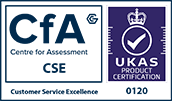Nuclear Disarmament Symbol Drawings
Archive reference: Cwl ND
The nuclear disarmament symbol, often known as the CND symbol in Britain and the peace symbol or peace sign elsewhere, is a modern icon of peace and dissent. The original designs of the symbol belong to Commonweal Library and are cared for by Special Collections. See them and discover their story via this article in our 100 Objects exhibition: Signs of Peace.
Gerald Holtom and the Symbol
The Direct Action Committee against Nuclear War was a small group of activists brought together by Harold Steele’s 1957 protest against British H-bomb testing at Christmas Island. Influenced by Gandhi's methods of nonviolent resistance, one of their first projects was a march from London to the nuclear weapons research establishment at Aldermaston over Easter 1958. Gerald Holtom, an artist based in Twickenham, was responsible for the visuals of the March. He decided to create a symbol that would signify both nuclear disarmament and the responsibility of individuals to work it.
In a 1973 letter to Hugh Brock (editor of Peace News in 1958, active in the Direct Action Committee), Holtom remembered: "I was in despair. Deep despair. I drew myself: the representative of an individual in despair, with hands palm outstretched outwards and downwards in the manner of Goya's peasant before the firing squad. I formalised the drawing into a line and put a circle round it. It was ridiculous at first and such a puny thing ...". The symbol also represented the semaphore signals for the letters N and D: Nuclear Disarmament.
Holtom submitted the design; the organisers of the march were pleased with it, but he did not think the symbol conveyed the need for individuals to take action. A few days later, he realised that if the symbol was inverted, it could be seen in a more positive way as the tree of life, a Christian symbol of hope and resurrection: this shape also represented the semaphore signal for U: Unilateral. The symbol's future relevance was assured when, later in 1958, the Campaign for Nuclear Disarmament adopted it.
The Drawings
Hugh Brock's widow Eileen donated the drawings to Commonweal. There are four sketches, on three sheets of paper: two forms of the symbol itself, and two of it in use on placards during the March.
The originals are very fragile and can only be viewed at the discretion of the Special Collections Librarian. High quality digital surrogates, and the facsimiles mentioned in the links below, are good enough to replace sight of the originals for most purposes.
Copyright in the drawings is held by the Commonweal Trustees: requests to publish them should be directed to the Special Collections Librarian in the first instance. Please contact us well in advance, as the necessary consultation can take several weeks.
The Papers of Hugh Brock, also in Special Collections, include an important section covering the story of the Drawings.


